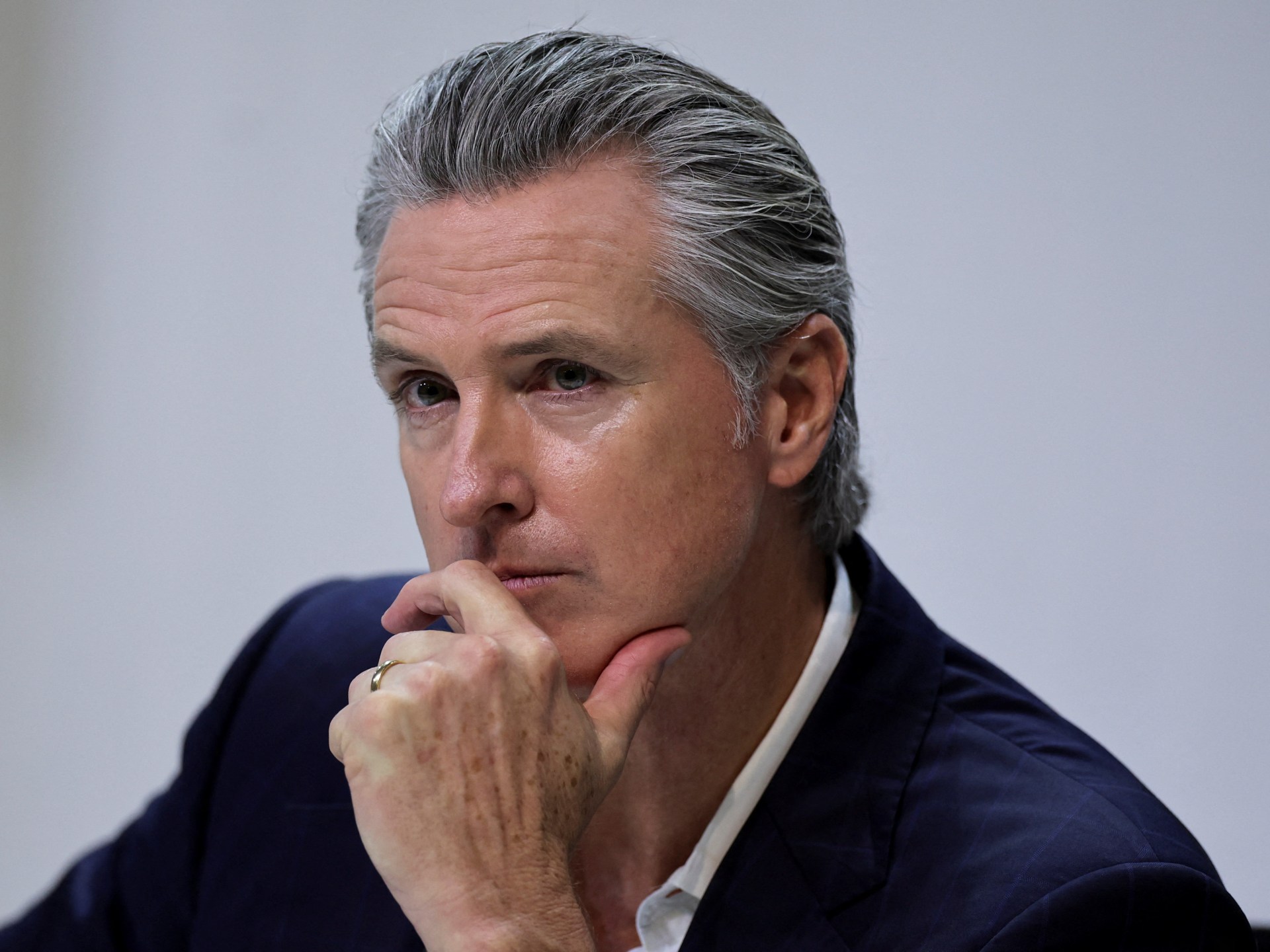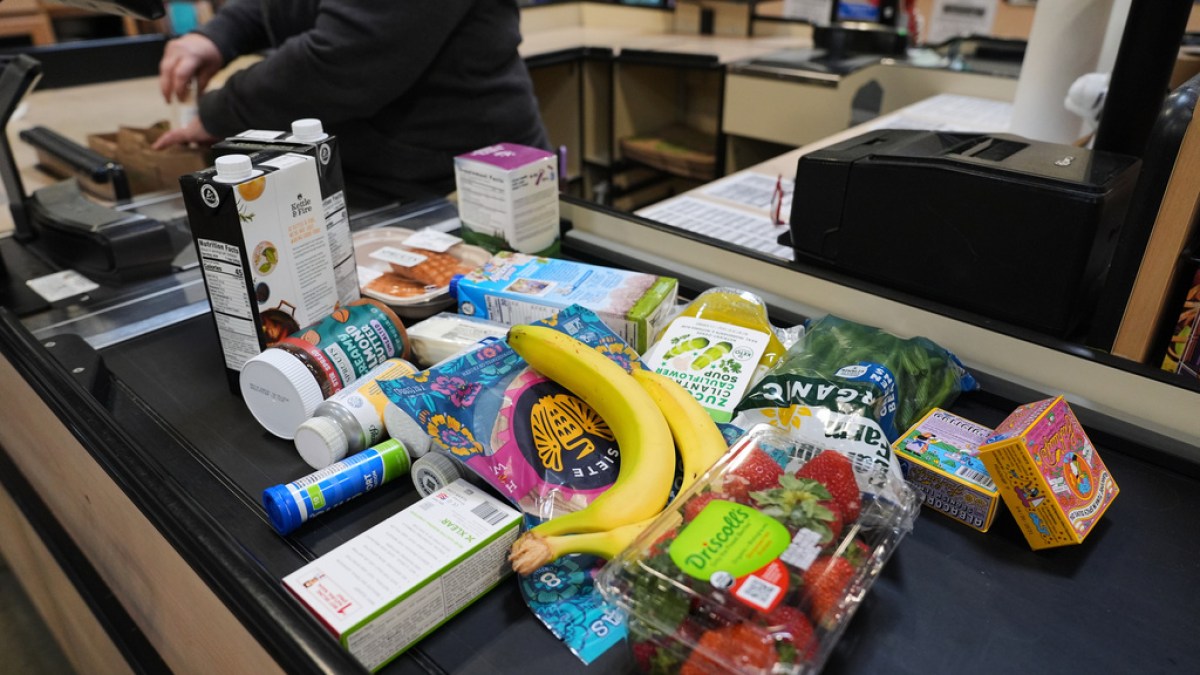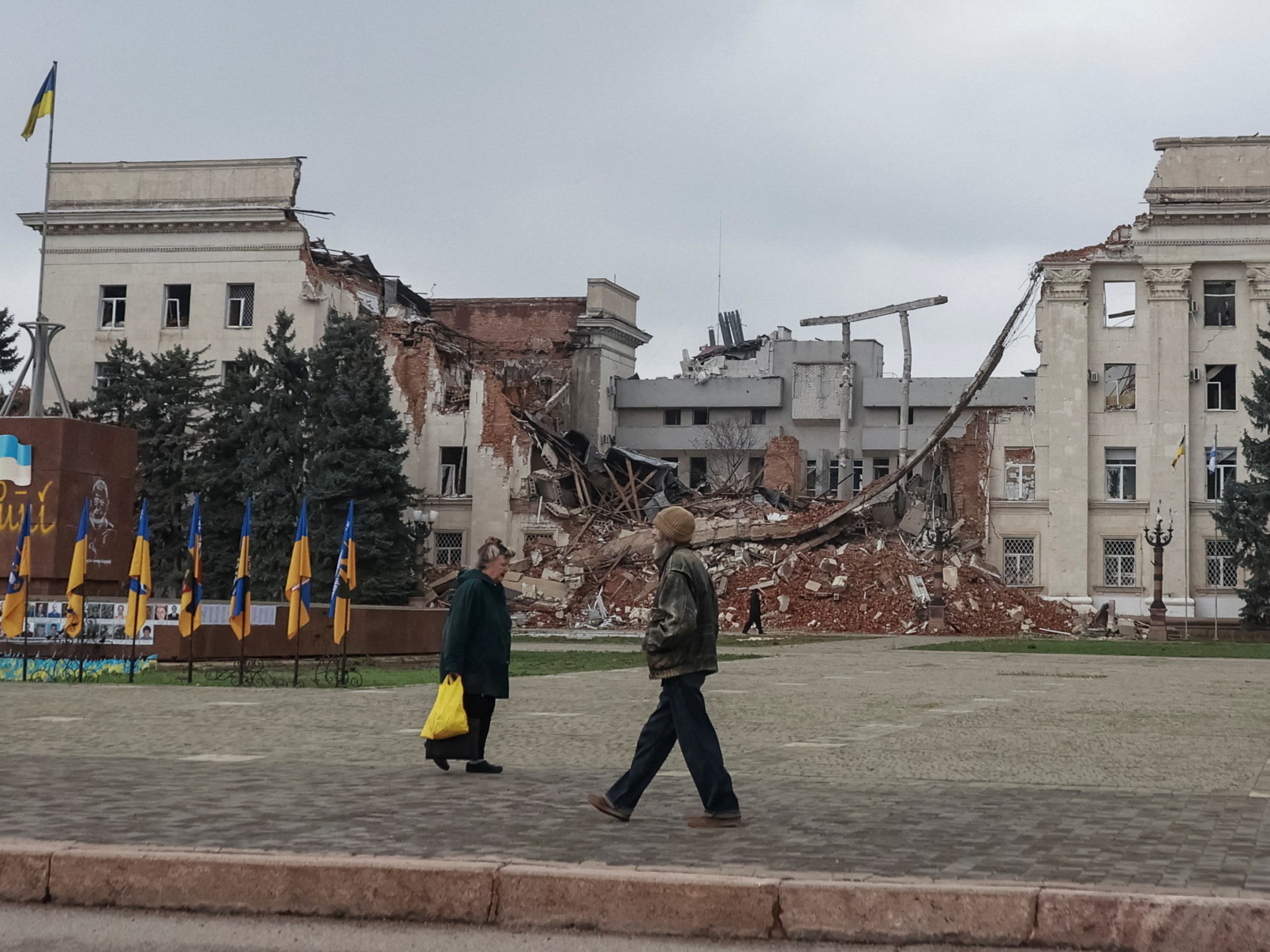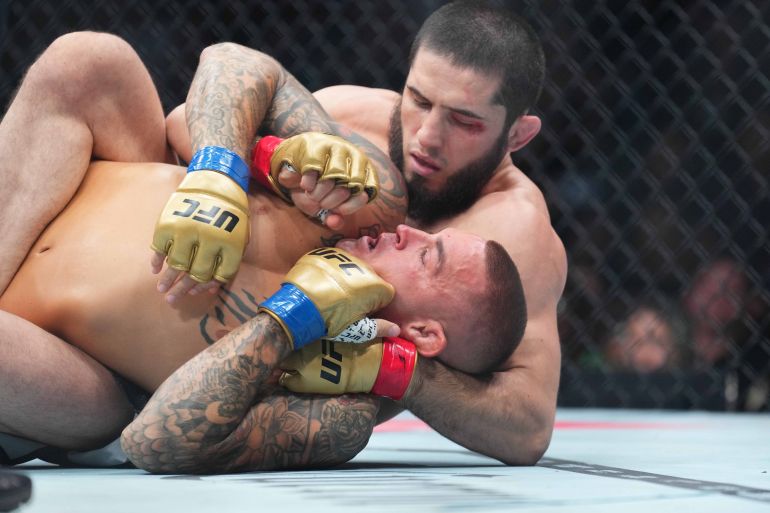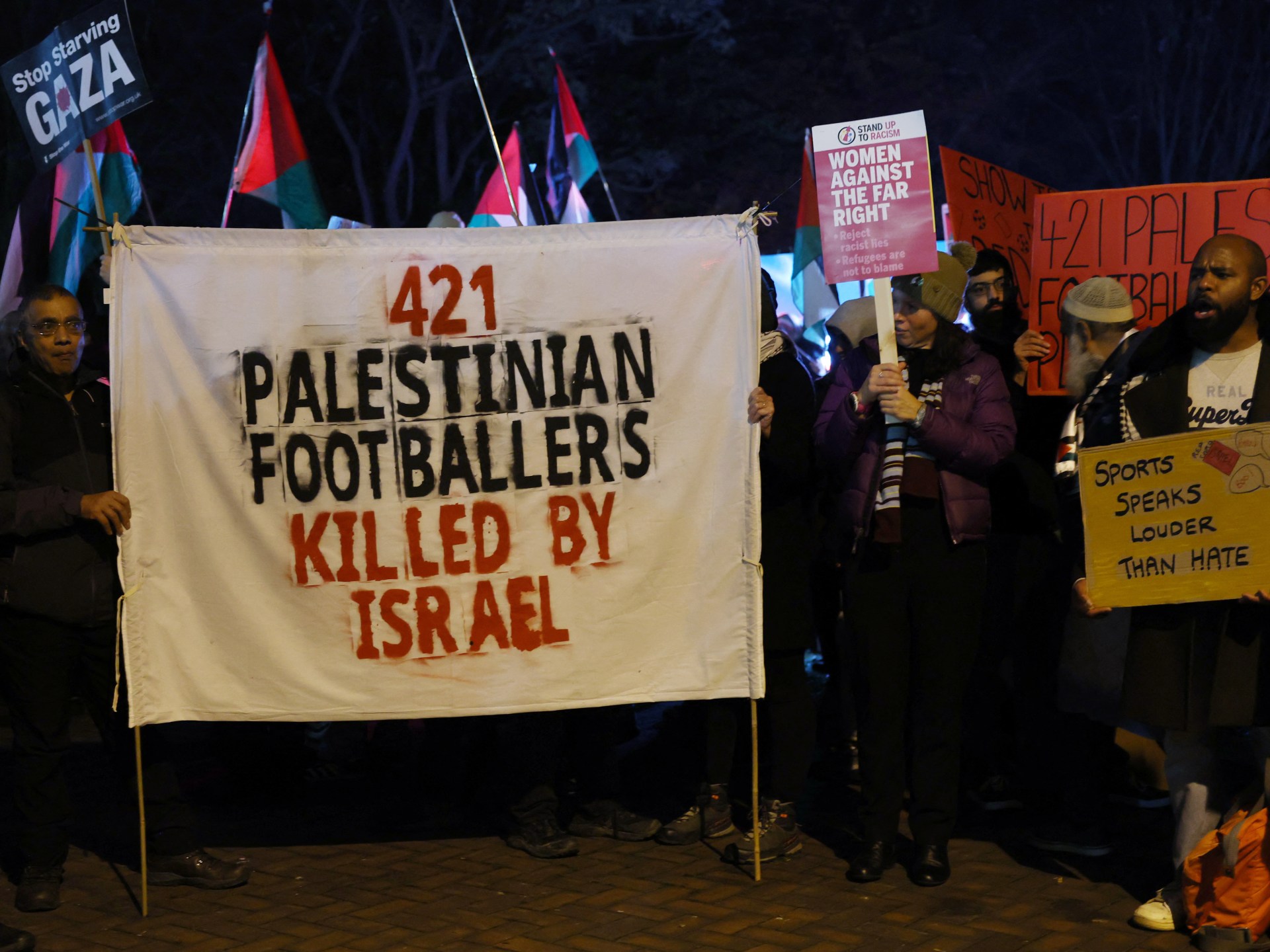One of the most notable absences at this week’s United Nations Climate Change Conference reflects the leadership of one of the largest greenhouse gas emitters in the world: the United States.
The administration of President Donald Trump has declined to send any top-level officials to Belem, Brazil, for this year’s edition of the annual event, known as COP30.
Recommended Stories
list of 3 itemsend of list
But in Trump’s absence, state and local officials have arrived to reaffirm the US commitment to climate change policies — and to take shots at the Republican leader.
On Tuesday, one of those politicians took centre stage: California Governor Gavin Newsom, Trump’s longtime sparring partner in the Democratic Party. He is widely speculated to be a contender for the 2028 presidential elections.
Appearing on a series of panels, Newsom denounced the Trump administration’s lack of representation at COP30 as an abdication of duty.
“I come here with humility, coming from the United States. I’m very mindful that the Trump administration has abandoned any sense of duty, responsibility or leadership as it relates to the issues that bring us all here together,” Newsom said at a ministerial meeting.
“It’s an abomination. It’s a disgrace. But rather than complaining about it, we’re trying to do something about it.”
He pitched his leadership as a contrast to Trump’s and sought to position California’s efforts as having bipartisan appeal.
In touting California as an innovator in clean energy initiatives, Newsom cited Republican leaders from the state, including Ronald Reagan and Richard Nixon, as spearheading efforts to reduce water and air pollution.
“I’m here because I don’t want the United States of America to be a footnote at this conference, and I want you to know that we recognise our responsibility, and we recognise our opportunity,” Newsom told the COP30 audience.
A political pivot
Newsom’s comments come at a critical juncture in his political career: Limited to two terms as governor, he is slated to exit office after the 2026 midterm elections.
The Democratic leader has spent his final years as California’s governor building an increasingly national and international profile. In 2023, for instance, he travelled to China, also on the premise of forging international bonds to tackle climate change.
And during the 2024 presidential race, he emerged as a gadfly to challenge Republican policies. He faced Republican presidential candidate Ron DeSantis in a televised Fox News debate and served as a prominent surrogate for the scuttled campaign of then-President Joe Biden, who exited the race over concerns about his age.
Trump, the victor in the 2024 race, has repeatedly taken aim at Newsom since his inauguration in January.
The two politicians have clashed over wildfire suppression, immigration policies and Trump’s decision to deploy federal troops to US cities. Trump even gave the California governor one of his trademark nicknames — “Newscum” — and mused in June that it would be a “great thing” if the Democrat were arrested.
Newsom, meanwhile, took aim at Trump’s international and domestic policies at Tuesday’s climate conference.
By failing to send representation to COP30, Newsom argued that the US had created an opening for China, the country’s economic and political rival, to exert greater power on the global stage.
“ China is here. Only one country’s not here: United States of America,” Newsom said.
While Trump has used tariffs on foreign imports as a tool to combat China’s growing sway, Newsom maintained that, by stepping away from climate initiatives and clean energy technology, the US was losing ground economically.
“This is not about electric power. This is about economic power. And we, in the state of California, are not going to cede that race to China,” Newsom said.
Trump’s climate policies
Trump has been vocal in his opposition to emission-lowering policies, going so far as to claim that climate change is a “hoax” and a “con job”, a position that disregards the scientific consensus linking fossil fuel usage to long-term effects on the global climate.
At September’s UN General Assembly, for instance, Trump asserted that countries around the world had been “devastated” by the “fake energy catastrophe”.
He also berated world leaders for attempting to impose policies that capped carbon emissions.
“All these predictions made by the United Nations and many others, often for bad reasons, were wrong,” he said.
“They were made by stupid people that have cost their countries fortunes and given those same countries no chance for success. If you don’t get away from this green scam, your country is going to fail.”
Trump had campaigned for re-election with the slogan, “Drill, baby, drill”, and since returning to the White House, he has sought to make good on his pledge to open federal lands to oil and gas exploration.
On Tuesday, while Newsom appeared in Brazil, The Washington Post newspaper revealed that the Trump administration is weighing a draft proposal to allow offshore drilling along the California coastline.
Such activity has largely tapered off in recent decades, due to high-profile oil spills, and California prohibits new oil rigs within state waters, but that area is limited to the waters within three miles – or about 4.8km – of the shore.
Democrats, including US Representative Mike Levin, have sought to pass legislation to protect the state’s coastline from further drilling, but to no avail. But Newsom on Tuesday said that Trump’s proposal was “dead on arrival”.
He also questioned why news of the drilling proposal broke during the COP30 meeting.
“He intentionally aligned that to the opening of COP,” Newsom said.
He pointed out that offshore drilling faces bipartisan opposition in Trump’s adopted home of Florida, where his Mar-a-Lago resort sits on the edge of the Atlantic Ocean.
“ I also think it remarkable that he didn’t promote it in his backyard at Mar-a-Lago. He didn’t promote it off the coast of Florida,” Newsom said, signalling a double standard. “That says everything about Donald Trump.”
Connecting with voters
Newsom’s broadside against Trump briefly reached beyond his opposition to the Republican president’s pro-fossil fuel policies.
When asked about Trump’s repeated air strikes against maritime vessels alleged to be drug-smuggling boats, Newsom delivered a fiery invective.
“What happened to due process? What happened to the rule of law?” Newsom asked. “I believe in the rule of law. I don’t believe in the rule of Don. That’s what we’re up against in the United States of America. I don’t want to lose my republic.”
Since September 2, the Trump administration has carried out at least 19 known air strikes in the Caribbean Sea and Pacific Ocean, killing approximately 75 people.
No evidence has been provided publicly to justify the bombing campaign, and the identities of the deceased remain unknown.
Legal experts have denounced the attacks as a form of extrajudicial killing, and leaders at the United Nations have called for an end to the military campaign as a violation of the UN Charter.
The Trump administration has defended the violence as necessary to interrupt drug trafficking into the US. It has also moved to label cartels in Latin America as “international terrorist organisations” and “enemy combatants”.
But Newsom argued that such actions were unacceptable, and called on the international community to stand up to Trump.
“Our politics needs to change, and I hope our international partners understand that,” he said. “It’s chilling to me to see those scenes of the United States of America blowing up boats with no transparency, no advice and consent with the United States Congress.”
At another COP30 event, entitled “America Is All In”, Newsom doubled down on his call for political change in the US, underscoring that Trump’s power is “temporary”.
“ He’s an invasive species. He’s a wrecking ball president,” Newsom said.
When pressed for solutions that would connect with voters, the California governor encouraged world leaders to find a unifying approach, particularly when it comes to combatting climate change scepticism.
Emission-lowering goals — like limiting global temperature increases to 1.5 degrees Celsius — felt abstract to most of his constituents, Newsom argued.
“I think we have to use different language,” he said. “The vast majority of my audience doesn’t know what Celsius is. You’re talking 1.5 degrees Celsius. How many more degrees is that in Fahrenheit? We talk about greenhouse gas emissions. Where are they? Do they float in the sky, or where do they land?
“We don’t understand. We have to use better metaphors. We have to change our language.”
